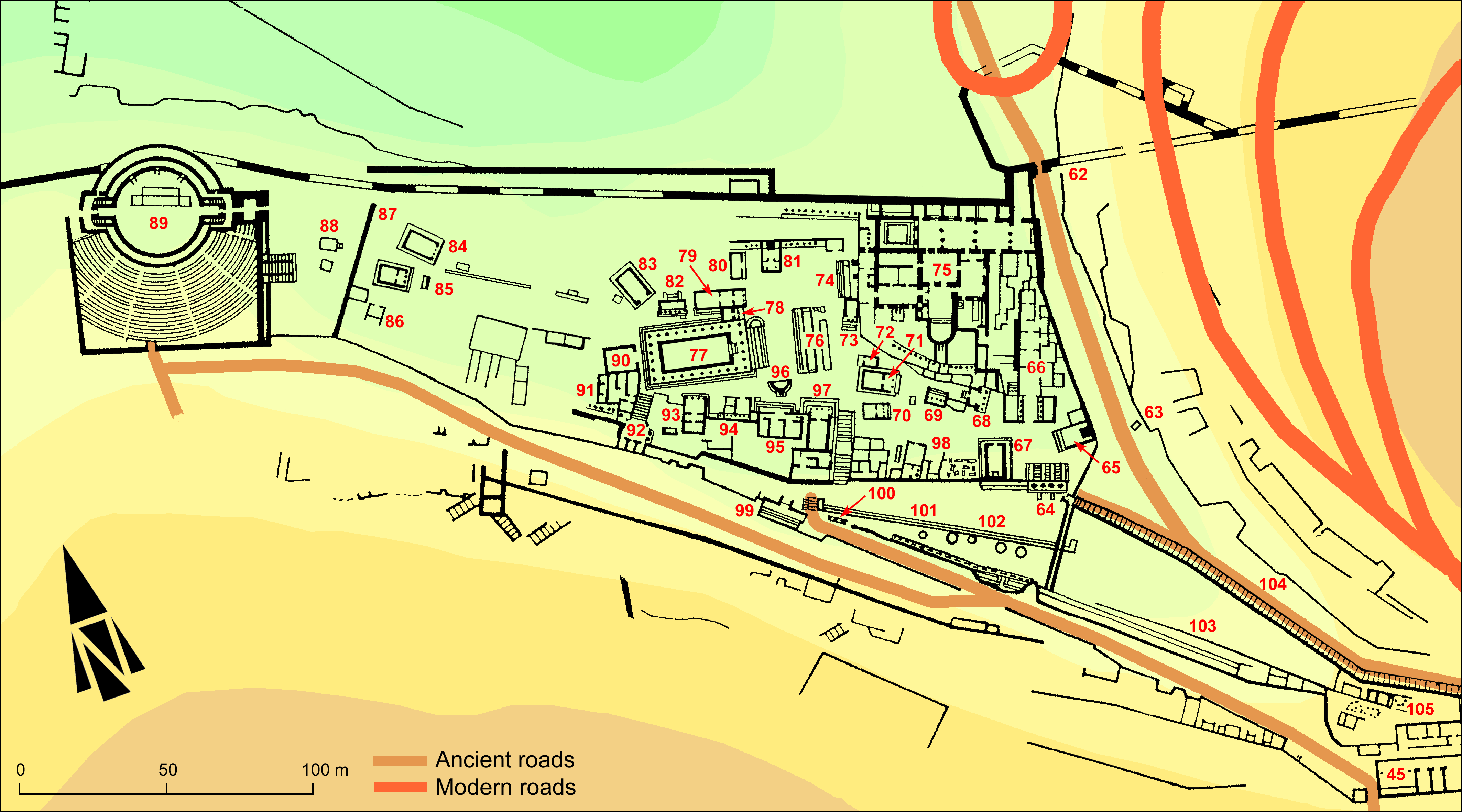EpiDoc XML:
IGCyr0153002
Trismegistos ID:
5991
Source description
Support: White marble base, later re-used, as shown from two deep attachment holes on former lower side; broken off at right lower angle and also slightly at right upper angle (w: 0.76 × h: 0.22 × d: 0.57).
Layout: Originally inscribed on the whole surface.
Letters: 0.025; some of the alphas have a dropped bar and phi has a very flat loop.
Date: Between 145 and 116 BC (reign).
Findspot: Found before 1930 at Cyrene ➚: in the North-East area of the Sanctuary of Apollo.
Place of origin: Findspot.
Last recorded location: Cyrene Museum, inv. number unknown. Seen by C. Dobias-Lalou in 2001 in Shahat: outside Cyrene Museum.
Text constituted from: Transcription from stone (CDL).
Bibliography
Oliverio 1932-1933, pp. 69-70, n. 6, whence SEG, 9.52; IGCyr 015300 ➚. Cf. Laronde 1987, p. 453, footnote 228; Lanciers 1988, pp. 431-433, whence SEG, 38.1671; Savalli-Lestrade 2009, pp. 145, 156, whence SEG, 59.1958.
Text
Apparatus
6: ⟦[------]⟧: ⟦[---]λ̣ε̣[---]⟧ Oliverio 1932-1933
French translation
(scil. Statue) du roi Ptolémée, dieu Evergète, fils du roi Ptolémée et de la reine Cléopatre, Dieux Epiphanes, (scil. consacrée par) [noms martelés].
English translation
(scil. Statue) of king Ptolemy, god Euergetes, son of king Ptolemy and queen Cleopatra, Gods Epiphaneis, (scil. dedicated by) [erased names].
Italian translation
(scil. Statua) del re Tolemeo, dio Evergete, figlio del re Tolemeo e della regina Cleopatra, Dèi Epifani, (scil. dedicata da) [nomi martellati].
Arabic translation
(تمثال) الملك بتوليميوس (بطليموس)، المُؤلَّه إفيريغيتس، ابن الملك بتوليميوس (بطليموس) والملكة كليوباترا، المؤلّهان إبيفانيس، (أُهدي من قبل) [أسماء ممحوه].
Commentary
E. Lanciers has argued that a date as early as 163 is also possible because of the epithet Euergetes, which he shows to have been chosen in 164/3.
The traditional view is that when king of Cyrene, i.e. from 163 to 145, Ptolemy was mentioned in Cyrene without epithet, whence the date 145/116 traditionally assigned to this and four other Cyrenaean inscriptions (so Laronde 1987, p. 453, footnote 228).
In the latter view, the erased lines contained the name and title of the dedicants and possibly the reason of the dedication.
If Lanciers is right, the erasure might have cancelled the name of one of both associate kings during the troubled period ending with Ptolemy's will (163-155; cf. IGCyr0112002).
CC BY-NC-SA 4.0 Deed Attribution-NonCommercial-ShareAlike 4.0 International License.
All citation, reuse or distribution of this work must contain a link back to DOI: https://doi.org/10.60760/unibo/igcyrgvcyr2 and the filename (IGCyr000000 or GVCyr000), as well as the year of consultation.


